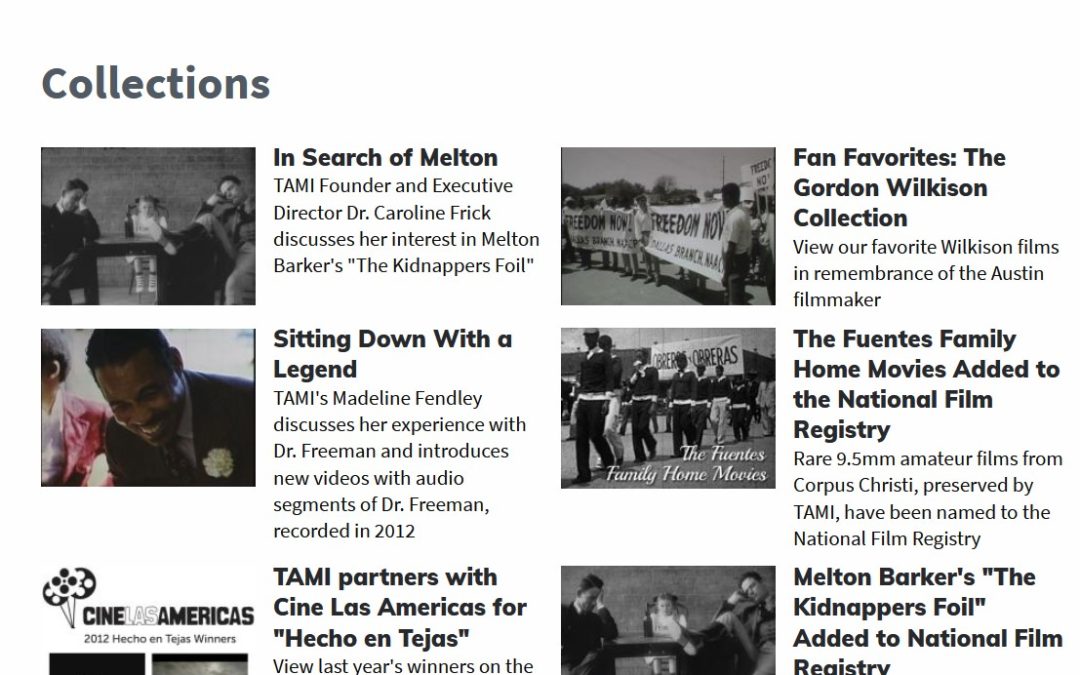This weekly series provides a view into various archives and their importance for genealogical research. This week’s selection is Texas Archive of the Moving Image. This organization began collaboration in 2003 to “discover, preserve, provide access to, and educate the community about Texas’ film heritage”.
Read more about this archive, their News and Events, the Texas Film Roundup, their Web Exhibits, but most importantly, their videos. The archive also provides lesson plans for educators, and digitization services for film enthusiasts. These videos are especially useful in comparing clothing to what was found in personal photographs.
Note: When scrolling from the top to the bottom, use the far-right scroll bar, as the video will try to reduce into a smaller frame and prevent the user from moving down the page.
Searching the Archive:
The search bar is available from the main page. When viewing the Featured Videos page, the user can choose to browse by a specific category, as noted on the right navigation panel, like:
Important questions are addressed on the FAQ page like how to embed a video on a web page or blog, how to create a DVD, and other topics.
Videos which captured significant historical events:
- 1900 Galveston hurricane and destroyed orphans home. This is one of the oldest motion pictures, per the Library of Congress.
- Home video and 1935 Rose Parade in California.
- Home video and Texas State Fair, 1956-7
- Cowgirl Rodeo, 1949.
- Another Day of War: The USAF in Vietnam (1965).
- The UT Tower shooting, August 1, 1966, in Austin, Texas.
- Congresswoman Barbara Jordan’s address at the 1976 Democratic National Convention (her speech starts at the 6:36 mark).
- 1977 Luckenbach World’s Fair.
- 1992 interview (part 1) with George Strait.
Note:
As with any archive which houses historical content, it is important to view the videos with a lens of objectivity as the attitudes, prejudices, or behaviors found within them may be offensive in today’s society, norms, and even laws. The videos might be considered evidentiary as artifacts and records of information which relate to the story being conveyed, completing the picture of that history. Family historians will need to consider these contextual aspects when reviewing and referencing the videos or their content in their genealogy research.
Contact SYFT:
If you need any help navigating this site, I’m happy to talk through the conversations and offer advice. You can fill out the Contact Me! form or email me directly at shapingyourfamilytree@gmail.com.
Images. Screenshot. Texas Archive of the Moving Image. https://texasarchive.org/ : accessed 13 September 2023.

